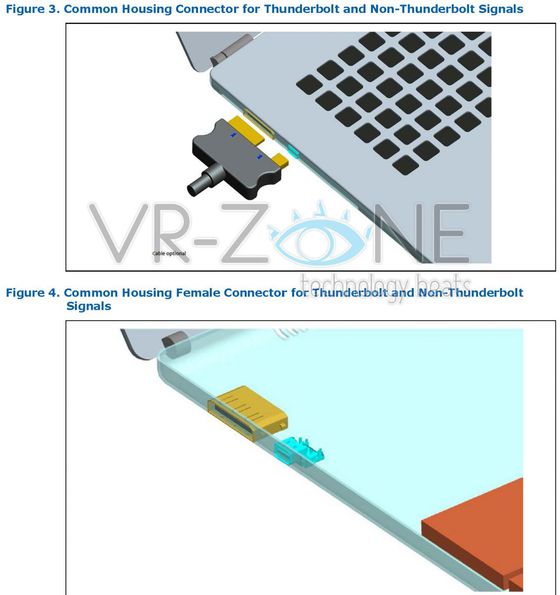With Intel’s Thunderbolt connector not exactly taking off as quickly as it would have liked, the company is apparently working on a new, standardized docking system which would give ultra-portable notebooks both a Thunderbolt and non-Thunderbolt connector to use, with the latter being reportedly used for things such as power and Ethernet connectivity.

This Ethernet connection is required by some PC-based networking solutions, with both Intel vPro and Microsoft’s Connected Standby requiring a direct connection in order to work. Ethernet over Thunderbolt therefor is not ideal in such situations.
In simple terms, Intel is suggesting that the notebook makers should fit a rather large dock connector plus a mini DisplayPort connector side by side to make it easy to attach a dock or a port replicator via either a cable or a side mounted latch mechanism of some kind.
Intel’s plans will require the buy-in of hardware manufacturers in order to take off, something which is not always easy. Given the world’s apparent lack of interest in Thunderbolt itself thus far, it is entirely possible that it may become the Firewire of this decade, with just a handful of companies embracing it.

A slow uptake brings with it other pitfalls, too. As with all new connectivity platforms, Thunderbolt will live or die on the support given to it by accessory manufacturers. Currently, one of the few companies to embrace Thunderbolt is Apple, but with few accessories taking advantage of the connector, not many people are making use of it.
Apple’s own attempt at turning Thunderbolt into an all-in-one cable and dock solution comes in the form of the Thunderbolt Cinema Display. Ostensibly a computer monitor, the display also acts as a dock for Apple’s MacBook line of computers.
Users only need connect the Thunderbolt cable and they are set, with power also coming from the same source via a split in the same cable. The display then plays host to an array of ports including USB 2.0, Firewire and Ethernet.

While Apple would be unlikely to take Intel’s new non-Thunderbolt connector on-board, anything that helps Thunderbolt gain approval with manufacturers and users alike can only be a good thing for a technology that few would argue is not an impressive one.
(via MacRumors) (source VRZone)
You can follow us on Twitter or join our Facebook fanpage to keep yourself updated on all the latest from Microsoft, Google and Apple.

